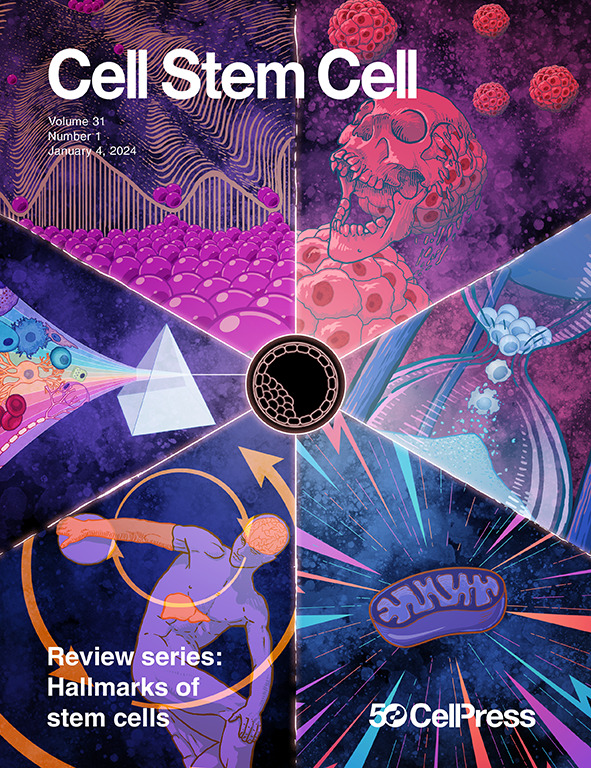Specification of human brain regions with orthogonal gradients of WNT and SHH in organoids reveals patterning variations across cell lines
IF 20.4
1区 医学
Q1 CELL & TISSUE ENGINEERING
引用次数: 0
Abstract
The repertoire of neurons and their progenitors depends on their location along the antero-posterior and dorso-ventral axes of the neural tube. To model these axes, we designed the Dual Orthogonal-Morphogen Assisted Patterning System (Duo-MAPS) diffusion device to expose spheres of induced pluripotent stem cells (iPSCs) to concomitant orthogonal gradients of a posteriorizing and a ventralizing morphogen, activating WNT and SHH signaling, respectively. Comparison with single-cell transcriptomes from the fetal human brain revealed that Duo-MAPS-patterned organoids generated an extensive diversity of neuronal lineages from the forebrain, midbrain, and hindbrain. WNT and SHH crosstalk translated into early patterns of gene expression programs associated with the generation of specific brain lineages with distinct functional networks. Human iPSC lines showed substantial interindividual and line-to-line variations in their response to morphogens, highlighting that genetic and epigenetic variations may influence regional specification. Morphogen gradients promise to be a key approach to model the brain in its entirety.

用类器官中WNT和SHH的正交梯度对人类大脑区域的描述揭示了不同细胞系间的模式变化
神经元及其祖细胞的种类取决于它们沿神经管的前后轴和背腹轴的位置。为了模拟这些轴,我们设计了双正交形态因子辅助模式系统(Dual orthogonal - morphogen Assisted Patterning System, Duo-MAPS)扩散装置,将诱导多能干细胞(iPSCs)球体暴露于后置和前置形态因子的正交梯度中,分别激活WNT和SHH信号。与胎儿大脑单细胞转录组的比较显示,双map模式类器官从前脑、中脑和后脑产生了广泛的神经谱系多样性。WNT和SHH的串扰被翻译成与具有不同功能网络的特定脑谱系的产生相关的早期基因表达程序模式。人类iPSC系在对形态因子的反应中显示出大量的个体间和系间差异,突出表明遗传和表观遗传变异可能影响区域规格。形态发生梯度有望成为全面模拟大脑的关键方法。
本文章由计算机程序翻译,如有差异,请以英文原文为准。
求助全文
约1分钟内获得全文
求助全文
来源期刊

Cell stem cell
生物-细胞生物学
CiteScore
37.10
自引率
2.50%
发文量
151
审稿时长
42 days
期刊介绍:
Cell Stem Cell is a comprehensive journal covering the entire spectrum of stem cell biology. It encompasses various topics, including embryonic stem cells, pluripotency, germline stem cells, tissue-specific stem cells, differentiation, epigenetics, genomics, cancer stem cells, stem cell niches, disease models, nuclear transfer technology, bioengineering, drug discovery, in vivo imaging, therapeutic applications, regenerative medicine, clinical insights, research policies, ethical considerations, and technical innovations. The journal welcomes studies from any model system providing insights into stem cell biology, with a focus on human stem cells. It publishes research reports of significant importance, along with review and analysis articles covering diverse aspects of stem cell research.
 求助内容:
求助内容: 应助结果提醒方式:
应助结果提醒方式:


